Toor Dal
Ingredients
- 1 cup toor dal
- 4 cup water
- 1 tsp salt
- 1/2 tsp turmeric haldi
- 1 Tbsp ginger finely chopped
- 1 tsp mango powder amchoor
- 1 tsp garam masala
Variation 1: With Vegetable Chaunk/Seasoning
- 2 Tbsp clear butter ghee
- 1/2 tsp cumin seed jeera
- 1/2 tsp black mustard seed rai
- 1/2 tsp red chili powder lal mirch
- 2 bay leaves tajpat
- Pinch of asafetida hing
- 1 medium tomato chopped
- 1 small zucchini chopped into 1 inch long cubes
- 6 string beans chopped about 1 inch long
Variation 2: Chaunk/Seasoning
- 2 Tbsp clear butter ghee
- 1/2 tsp cumin seed jeera
- 1/2 tsp black mustard seed rai
- 2 bay leaves tajpat
- Pinch of asafetida hing
- 4 whole red chili sabut lal mirch
- 1/4 tsp paprika
Instructions
- Wash dal, changing water several times until the water appears clear.
- Soak dal in 4 cups of water for 30 minutes or longer.
- In pressure cooker add dal, water, salt, turmeric, and ginger. Cook over medium high heat.
- When the pressure cooker starts to steam, lower the heat to medium and cook seven minutes.
- Turn off the heat and wait until steam has stopped before opening.
- Mix the dal well. If the dal is thick, add more boiling water to desired thickness.
- Mix the mango powder and garam masala with a few spoons of water and add the mixture to the dal.
Variation 1: Vegetable Chaunk/Seasoning
- Heat the oil in a saucepan. Test the heat by adding one cumin seed to the oil; if it cracks right away, the oil is ready. Add hing, cumin seeds, and mustard seeds.
- After the seeds crack, add bay leaves and chili powder. Stir for a few seconds.
- Add the vegetables. Stir and cook four to five minutes, until the vegetables are tender.
- Combine the vegetables and the dal and mix gently.
Variation 2: Chaunk/Seasoning
- Heat the oil in a saucepan. Test the heat by adding one cumin seed to the oil; if it cracks right away, the oil is ready. Add hing, cumin seeds, and mustard seeds. After the seeds crack, stir for a few seconds.
- Add bay leaves, whole red chilies, and paprika. Stir for a second, adding one tablespoon of water to prevent burning.
- Pour in spice mix over dal.
Notes
How To Make Toor Dal Recipe – Manjula’s Kitchen
Instructions on:
The Art of How to cook Toor Dal
Toor Dal, also known as split pigeon peas, takes centre stage in this toor dal recipe. This humble yet versatile ingredient, when treated with care and precision, transforms into a dish that transcends ordinary expectations. Follow the detailed toor dal recipe carefully to embark on a journey of how to cook toor dal that promises to tantalize your taste buds.
1. The Prelude: Cleaning and Soaking
We begin the toor dal recipe by washing the toor daal meticulously, changing the water several times until it runs clear. This ensures the removal of any impurities, setting the stage for a pure and flavorful dal. Allow the dal to soak in four cups of water for a minimum of 30 minutes, allowing it to absorb the moisture and soften, preparing it for the cooking process.
2. The Pressure Cooker Overture: Infusing Flavors with Precision
In the pressure cooker, combine the soaked toor daal with water, salt, turmeric, and ginger. This combination lays the foundation for the flavor profile of the dal. Place the pressure cooker over medium-high heat and allow the magic to unfold. As the cooker starts to steam, lower the heat to medium and let it cook for seven minutes, allowing the dal to absorb the flavors and achieve the perfect texture.
3. The Culmination: Unveiling the Cooked Dal
Turn off the heat and patiently wait until the steam has dissipated before opening the pressure cooker. This step is crucial as it ensures that the toor daal is cooked to perfection, with each grain maintaining its integrity. Upon opening, mix the dal thoroughly. If the consistency is thicker than desired, adjust by adding more boiling water until you achieve the preferred thickness.
4. The Flavor Infusion: Mango Powder and Garam Masala Elevation
Enhance the dal’s flavor profile by creating a mixture of mango powder and garam masala with a few spoons of water. This potent blend introduces a burst of tanginess and warmth to the dal. Gently incorporate this mixture into the dal, ensuring an even distribution of the aromatic spices that will elevate the dish to new heights.
5. Variation 1: Vegetable Chaunk/Tadka/Tempering
For those seeking an extra layer of texture and flavor, consider the Vegetable Chaunk. In a separate saucepan, heat oil until it reaches the right temperature (verified by the crackling of a cumin seed). Add hing, cumin seeds, and mustard seeds and let them crackle before adding bay leaves and chili powder. Stir for a few seconds before incorporating your choice of vegetables. Cook until the vegetables reach a tender state, and then gently combine them with the dal, marrying the flavors into a harmonious union.
6. Variation 2: Chaunk/Tadka/Tempering
Alternatively, choose the second variation for a more robust flavor profile. In a separate saucepan, heat oil and add hing, cumin seeds, and mustard seeds. Once crackled, introduce bay leaves, whole red chilies, and paprika. Stir for a moment, adding a tablespoon of water to prevent burning. Pour this spice-infused concoction over the dal, letting the flavors meld into a symphony of tastes that dance on your palate.
7. Culinary Notes: Serving Suggestions
As the final act unfolds, serve this delightful toor Dal with steamed rice or any Indian bread: Lacha Paratha, Puri, or Roti of your choice. The versatile nature of Toor Dal makes it a perfect accompaniment to various grains and bread, ensuring a satisfying and wholesome dining experience.
The art of crafting How to make Toor Dal recipe involves meticulous attention to detail, from cleaning and soaking to the infusion of spices and the optional variations. This toor dal recipe encapsulates the essence of Indian cuisine, where simple ingredients are transformed into a dish that not only nourishes the body but also delights the senses.
Enjoy the rich flavors, the aromatic spices, and the satisfaction of creating a Toor Dal that stands as a testament to the culinary traditions passed down through generations.

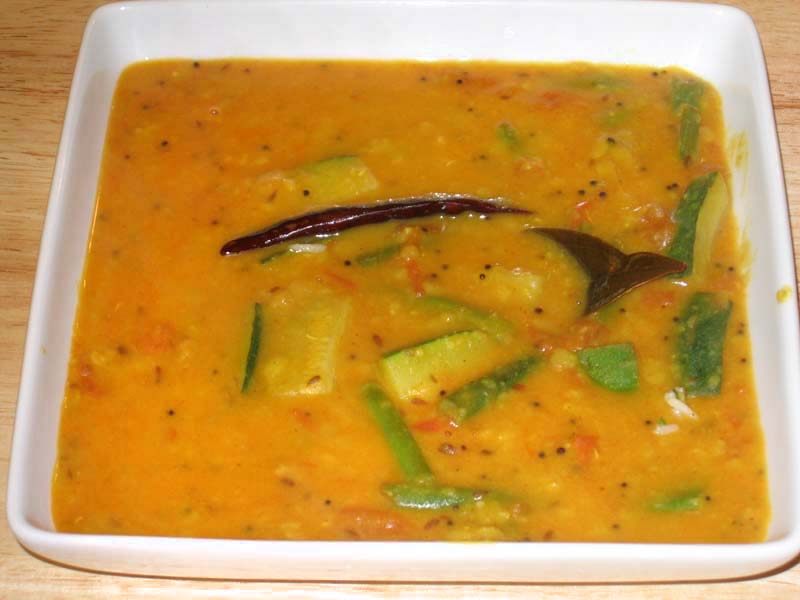
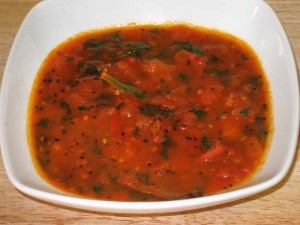
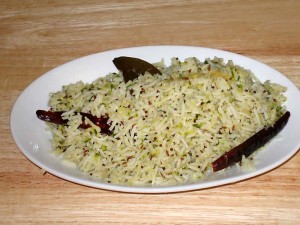
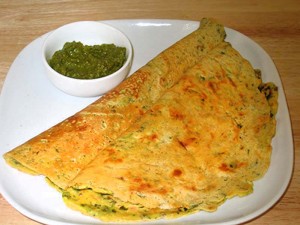
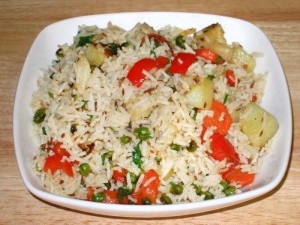
The way you explain to make this recipe is so unique and simple. I will try this recipe soon.
Thanks for sharing this with us.
Thank you this really helps. I m living away from home and attempting cooking for the first time. These recepies are a savior
Hi there,
How do I make this dal without a pressure cooker? Thank you!
MsRalli,
make it in sauce pan it will take about half an hour to cook.
Many thanks, I shall try this tomorrow. I’m a great fan here in Northern Ireland.
I tried this last night and it is delicious! I love Indian food and always wanted to learn. You make it so easy to follow! I you could, please do a recipe for plain restaurant style Indian Rice (with cumin seeds and such). If you make it, I know it will be so good!
Love this blog
Last time i watched a recipe for gobi adraki…i am not able to find it now…can you please where can i watch it.Thanks.
Many Many thanks to you Manjulaji for your really helpful cooking videos.It is really a kind of guide map for a bachelor & novice cook like me.
Keep up the good work.God bless you !
Thank you so so so much. Being in china theres a big problem with indian food but by your help I can cook whatever I want ,whenever I want. Thanks for sharing your recipes with us. God bless you.
A BIG THANK YOU auntie ji.. being a bachelor and living in south india, i missed northie food and your videos have helped me cook whenever i want and whatever i want.. no need to call mother every now and then now 🙂 ..
I made your Toor Dal yesterday and it was fantastic!! My husband says he doesn’t like lentils but he ate 4 helpings of it. We love Indian cuisine and live in a place where we can’t easily get it, so I’ve decided to start cooking it myself. Thank you for such a wonderful website. Oh, I also made your palak paneer (I made the paneer) and the aloo mutter. They were all excellent.
Hi Manjula,
Can you tell me how long to cook Toor Dal Oily for ..as I do not have a pressure cooker.
Thanks
Thanks aunt for the recipe…It is a treat to watch you cook….Rather than just giving recipes online I really liked watching you cook. I have made dal and just about to relish it now. Thanks again.
tnx manjula
Manjula, I am really touched by your enthusiasm and love for cooking. I am so grateful that you are sharing your great recipes. I made the dal with Ghee tadka for lunch. It was so delicious and satisfying. I am going to be making the one with vegetable chaunk for dinner. Thank you once again. Lots of love from Canada.
Thanks For recipes.Its always make my mouth wet.
I really enjoy ur recipes.My sis always visit ur site for new-2 dishes.our family love to have ur recipe’s food so often.
Thanks again for giving the taste of indian food.
I love your simple recipes.. I really feel good and comfortable making them..Thanks
It is very recipes,thank you.
Thank you so much for all your recipes. I’m on your site all the time and I’ve learned so much from you. I’ve told my friends and family about your web page, and they’re all learning from you, too. Thank you for this cool project. It’s really helping people become better cooks. Thanks!
I just tried the Chick peas with spinach dish. Came out great. Thank you Manjula Ji for your detailed presentation on video. I am a recently divorced man and my 15 year old son has just moved in with me, so I was looking for some way to cook different dishes for him and your website is a God send. I will definitely try out other dishes as well.
All the best and keep the recipes coming.
is masoor dal same as moong dal??toor dal is same dal known as moong dal???pls reply……lot of confusion
ni-00,
Masoor dal, Moong dal and Toor dal all three are different dals.
Oh my! Everything I make from your recipes turns out wonderfully!
I use canola oil instead of ghee and I finish off almost everything with fresh lime and cilantro. I had to have two helpings tonight!
Didnt have mango powder, added a cheeky bit of tamarind paste. incredible.
This has been a staple in our household for some time now. I really love this.
for dal ghee chaunk instad of paprika what we can use
Shobha,
I use paprika to give nice color to Dal, you can skip this, taste will be same.
Will substituting olive oil for ghee substantially change the dish? (I’m having cholesterol issues.)
Thank you.
Olive oil is fine, but canola is better (of all the vegetable oils it has the least amount of saturated fat).
Olive oil gets very hot very quickly, whereas canola or any of the vegetable oils are more heat tolerant. For doing the “chaunk” they work better because you can get them hot enough to sizzle to the seeds, but the oil won’t start smoking.
If you only want to use olive oil, you can. You just have to know it will get hot fast.
Carolg,
Olive oil will work.
It’s great to watch a master at work !
When I have dal from an Indian takeaway, it is very, very thin, very spicy and seems to have no lentils in it whatsoever. How can they call it a dal when there are no lentils in it ..? Do you think they whizz it all up in a food processer then water it down ? Would that explain why I can’t see any lentils in it ?
Do samosas have to be fried – can they be oven baked to save on calories? ta
Superb!!! Bookmarked this web page that has this striking guidance. Will arrive back again to see if there are any updates. You, the author, are a master. Thank you
Hi Manjula Aunty ,
I am very new to cooking and I find your way of cooking extremely interesting and good .I will try to learn more and more from your website .Thanks a lot for sharing the cooking methods with everyone .God bless you and your family
Aunty, your recipes are too good. I have tried so many of them. Will try your aloo baingan tomorrow. Thanks so much.
Aunty,
Your food is so delicious. I am 3 months pregnant and going crazy with the food cravings your website gives me such relief I tried making aloo parathas like you have taught in your videos they came out well. can you tell me the recipe for oodhiyo (the sabzee you make during uttarayan)
lots of love
Noopur
Hi,
Can you please make all these recipes available in a single combined document pdf, so that i can run it off on my printer and have it for my kitchen:)
Many thanks
dear Auntygee..thank you so much for yjis recipe. My husband loves dal and i am not making it the right way. I will try your method as soon as I can. many thanks! motixxoo
why dont u copy-paste the recipies in to word and print urself! think smart!
How do I make this without pressure cooker please auntyjee
Aisha, dal can be cooked without a pressure cooker it just takes longer. Soak the dal overnight if possible and then put it in a pan with water. Cook on medium heat with the lid partially covering. You must check it often because it can boil over if the heat is too much. Allow about 30 to 45 minutes to cook it this way.
Aisha, I feel compelled to warn you against too much turmeric or salt when cooking this dish on the stovetop! The lentils absorb a good deal of water, but a good deal is evaporated as well, concentrating some of the spices. It can be unpleasant. This is a wonderful recipe if you follow it as written, but beware if you deviate!
Dear Aunty \,
i made chana masala , dal makhani, rajma, veg cutlet, pakoras, mathi, aloo gobi, kadhai paneer, aloo & eggplant and my husband just loved it….
THANKS A TON
Aunty,
I love your website. It is a life saver. Can you give me the recipe for a typical Gujurati dal and Kadhi. Thank you.
Hi Hema,
These recipes in my do to list, I dont know when.
Thanks Aunti,
My wife is in India, This is first time in my life i prepared daal using your method. It looks fine for me.
Thanks
Amit
Hi Manjula Aunty,
I am going to make roti dal(vegetable chaunk version) now but I don’t have zuccini and beans. What other vegetables can we add. Can we add carrots and potatoes. Please reply.Thanks
hello aunty
ur site is really helpful.i got married and came here in sept from then i was exploring many web’s but i foud out urs is the best….i love ur spinach-monng dal and dal makhani a lot.waiting for more authentic dishes.
Hi mam the reciepes are really very good and the videos u provide for the reciepes are really helpful for me as my both sons have a very good taste for food so i have to really try new dishes all the time and ur site is very helpful for me THANKYOU.
what is papriya
Another easy way:
1. microwave beans.
2. cook dal in pressure cooker with just salt added.
3. fry onion and tomato and then add microwaved beans.( in oil)
4. add cooked dal ( remove water if needed).
5. boil for sometime; add garam masala and red chilli powder as needed.
6. add one tablespoon of ghee in the end( advanatge: less ghee, but with good flavour of ghee)
Hi aunty !
i have just tried this recipe and it turned out great, thanks to your clear instructioni feel confident in the kitchen .
god bless your great service !
Nice recipes Manjula…
Keep posting more and more recipes.
I like your way of cooking…
Thank you
Hello,
unknown???
yes, because it is indian dish? And common indian ingredients where is no name in engslish, because no use of that ingredients in U.S.
So…what to do…???
Look out for an asia or india store…and they will understand u…(what a good feeling)
…buy the toor dal and the spices…go home…and join cooking the traditional indian dishes…..yum yum yum ~~~~~~~~~~~~
Dear Manjula!
Instead of ghee can I use oil to make the chaunk? Please send me your answer.
Thank you!
Hello Orsolya, Yes you can use oil.
Toor dal are also called “pidgeon peas”. They are a yellow dried lentil that has been split in half. They are about the same size as a green pea, but flatter in thickness.
Indian grocery stores or natural/health food stores are usually the only places you can purchase these in the US. Large grocery stores may have them in their ethnic food aisle.
Which other ingredients are you having trouble with?
Jaya
what is “toor dal”, would it be possible to put the ingredients in English? or at least a good description of what is it?
The side is great but its kind of hard to follow the recipes as the ingredients are unknown in the USA.
‘Google’ any ingredients you don’t know. This is how I have learnt over the years to cook Indian vegetarian food, and I have only ever lived in Australia & New Zealand.
go to an indian store and they will help you out!
wow….finally the recipe for this dal….my friend from work and family are gujarati. The mom would make me this dal and yes it was super spicy but so very good. I tried to ask her for the recipe but of course her English wasn’t that well plus we lived on opposites sides of town so i couldn’t watch. Now because of you Manjula I can learn. Thank you so much! I think I was Indian in a past life or something!
You can cook this without a pressure cooker, it will just take more time. Cook it on medium-low heat with a lid on. Check it periodically to make sure it doesn’t cook dry. You may need to add some water towards the end of cooking if it becomes thick.
If the dal has been pre-soaked for about 4 hours, the cooking will take about 30 to 45 minutes without a pressure cooker.
Dear Manjula:
Your dal recipes all seem to require a pressure cooker. Howw do we cook it if we don;t have one? Is there a slow cook way?
Thanks.
Jaya–Thanks! Good to know!
Cheers,
Annette
can you please 🙂 show us how to make moong ki dal? Pretty please
Hi Annette,
Toor dal is sold as dry or oily. You will probably never find a recipe that will specify one over the other because it doesn’t matter. I personally buy the dry version.
Oily dal can sometimes be of lesser quality than dry. I would suggest you discard the oily dal if it’s been so many years since you bought it. Another reason the oily dal recipe didn’t taste good could be that the dal itself was not of good quality. I’m just guessing, but it’s possible.
Jaya 🙂
I made the veggie chaunk version, and it wasn’t just very tasty, but also smelled lovely–very aromatic. Thanks for another great recipe!
By the way, although I used dry toor dal for this, I’ve always wondered whether it’s worthwhile to look for a good recipe for *oily* toor dal? Years ago, I bought it and made a recipe with it, but it came out pretty badly… If there’s something great that can be done with it, I’d be curious to know.
hello aunty,
Gr8 recipes. LOTS OF THANKS .
Hi Manjuala aunty,
i am enjoying your recipies very much. I made almost all of them. I am from Punjab, India and i am a vegetarian. Please bring more vegetarian recipies. Thank you so much and keep up the good work!
Thank you Manjula for a great venue for vegetarian food. Being a vegetarian all my life I am always looking for different recipes. I even have my children cooking following your you tube lessons. Bravo, well done. Could you kindly put nutrtional information for each recipe?
Sincerely
Chandar
I recently moved and back home I ate out at least once a week at my favorite resturant Nepal, which served Indian food, I was so miserable until I found out my new neighbor just happened to be Indian and made me dinner the first night we moved in what luck! But I realized I need to learn how to cook my favorite indian dishes, as a vegeterian Indian food is perfect for me I should have been born Indian!, thanks for your recipes they are really helping me!
Hello Jame, Paprika is just to give more color so you dont need to use, mango powder can be replaced with lemon juice and bay leave you can do without but I dont know any sustitue for it.
Madam, instead of Paprika, Bay Leaves & Mango Powder, what are the other alternatives that we can use to make the toor dal. Pls reply with your experienced comments.
you can still cook dal will just take longer to cook.
How can I make this if I do not have a pressure cooker? Can you just cook it for longer? I love dal!
Lovely recipe as my Mum used to make.
Your recipes are great. Thank you
You have made Indian cooking so easy for a Chinese.
This is indeed a wonderful website. I stumbled upon it looking for a simple Dal recipe, and couldn’t resist to try out a few of the others, too. I love the videos. You make veg Indian cuisine accessible to all, Manjula. Keep up the great work!
zuchchini is a courgette (in the UK)
Great website.
hello Manjula,
I have been a fan for many months now. I am in love with your cooking and teaching style. I am slowly adding Jain cooking techniques to my repitoire of cooking. I especially am using seasonings and ghee/oil technique to my Caribbean style of curries. My one question today is what is the brand name of your cookware? The pans have a shape that I need but have not yet found, especially for stir frying. Please respond. Thank you.
Karen
hi manjula ji
you put pressure cooker with dal on medium high heat.then u say let it start steaming n then turn the heat down. ’start steaming’ means what?
we should wait for one whistle and then turn the heat down
thanx for your reply
hi manjula ji
you put pressure cooker with dal on medium high heat.then u say let it start steaming n then turn the heat down. ‘start steaming’ means what?
we should wait for one whistle and then turn the heat down
thanx for your reply
Zucchini is also known as Italian summer squash
manjula ji
what is zuchchini
Hello Manjula!
Your recipes are fantastic! My husband and I love your samosas and potato curry especially. Could you please show us how to make tarka daal?
Thank you so much!
Hello Manjula g,
I check your web site regularly and all your recipes are good, keep up the good work. I tried ur recipe for veg -cut let and bendi fry they tasted very good.
Thanks again for sharing all your years of experience in the kitchen with us.
Audrey,
As Manjula says you’ve got an internet problem: your connection is slow. Maybe you can download the video to your pc and watch it offline.
I’m not seeing any problems here. Have you verified that your internet is working properly? If the problem persists, please post this question to the discussion forum.
I am so happy to learn of this site, but when I tried to view the video it stopped every 20 seconds. During that time (about 20 more seconds) there was a small circle of grey dots that kept moving. Is there any way you can fix this? Thanks.